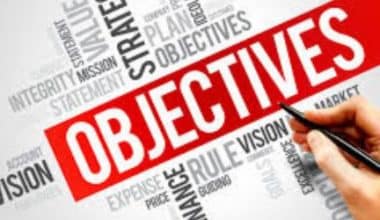Ensuring all parties follow through on the stated criteria and provide the level of support, service, and product agreed upon in the contract is known as the procurement contract management process.
A key component of efficient procurement contracts management is ensuring that the organization receives the greatest possible benefit from the contract while simultaneously reducing the risk it assumes. It also involves locating ways to cut costs and acting as a facilitator for any revisions to the contract that may become necessary as the nature of the relationship develops.
Here are some of the best 5 practices in contract management procurement.
#1. Emphasize Early Management of Procurement Contracts
It is too late to start considering procurement contract management once it has already been drafted. When a contract has been drafted, it is far more challenging to make changes to the terms of the agreement.
Instead, keep it in mind right from the start of the procurement process. It’s important because you have a lot of control in the beginning.
The next step is to consider the contract and the elements that must be incorporated into it to guarantee that your company will derive the greatest possible benefit from the partnership.
#2. Get Rid of All the Manual Steps
The likelihood of human mistakes and time wasted when tracking data manually across many spreadsheets, siloed systems, and separate applications are increased.
The possibility exists that your team will need to remember about contract renewals, causing them to miss the opportunity to negotiate better terms. Even worse, you run the risk of becoming locked into a contract for the long term that has a negative price.
By automating many procedures using CLM (Contract Lifecycle Management) Software, you may steer clear of the hazards inherent to human labor. These platforms simplify gathering information about suppliers and keeping track of contractual obligations.
In addition, you will receive real-time insights about the performance of your vendors, allowing you to proactively follow up with those who need to meet your expectations.
#3. Optimize Your Inventory
As profit margins continue to decrease in certain sectors of the economy, businesses are continuously searching for new ways to rein in their spending and boost their bottom line. Therefore, it is essential for procurement teams to perform constant stocktakes and check that their levels are maintained at an optimum level. Below is a list of inventory information you should be aware of.
- The “actual cost” of maintaining an inventory is far more than placing product orders.
- The rule of thumb about holding charges is between 20 and 30 percent.
- Consumable goods are not the only products that degrade with time; everything from consumer electronics to apparel is prone to deterioration.
- The lack of adequate planning and forecasting is the primary culprit for out-of-balance inventories.
Leaders in procurement operations worldwide are gradually coming to realize the promise of improved data-driven insights. In the 2018 Global CPO study, almost half of the participants admitted that their companies use intelligent and advanced insights to optimize their costs and inventory levels.
Below is a list of questions that businesses need to ask themselves to determine whether or not their inventory is optimized:
- What is the proportion of the operational inventory that consists of excess stock, safety stock, and replenishment stock?
- Does the procurement team acquire more or fewer products or services than necessary?
- What is the best number of times per month to make a purchase?
- Are there any discrepancies between the orders and the purchase requisitions that have been made?
#4. Closely Monitor Obligations
One further advantage of digitally centralizing your procurement contracts is that it enables tighter monitoring of all contractual commitments, including your own and those of the other businesses with which you have contracts.
The marking of crucial deadlines and the automatic receipt of notifications on upcoming deliverables are relatively simple tasks. This way, your company will be able to meet renewal deadlines.
Additionally, it enables you to monitor – and, as a result, significantly reduce – the number of late or missing deliverables from your vendors.
#5. Ensure Compliance
It is equally as critical to ensuring that your contracts conform with the relevant internal, industry, and regulatory laws as it is to monitor all contract schedules.
Because noncompliance can result in costs for your company, such as penalties, legal action, and a loss of reputation, you need to review every contract to ensure that you fully comply with its terms. You can accomplish this goal more easily by centralizing your contracts, preventing rogue departments from writing contracts lacking these essential components.
Compliance is easier when you start your contract with preapproved terms or complete contract templates with all the compliance-related information you’ll need. This can be done in several ways.
Conclusion
While some of these best procurement practices may appear straightforward and common, others are recent developments in the field. However, organizations can unlock procurement excellence by appropriately implementing them.
The first step toward developing a sustainable procurement strategy is acquiring a digital procurement tool hosted in the cloud.






